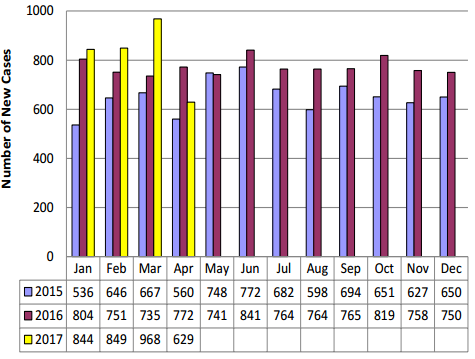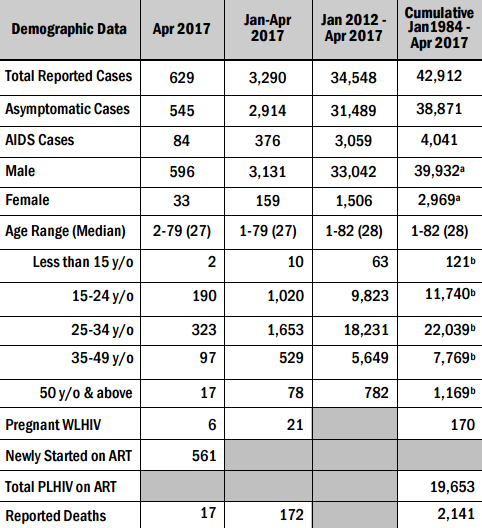Blog
April 2017’s HIV/AIDS Statistics: A Breakdown
In a classic good news/bad news scenario, the latest HIV/AIDS statistics released by the Department of Health is anything but simple. We’re breaking down the numbers to decode the ups and downs of our country’s current HIV status.
The Good
According to DOH’s latest statistics on HIV/AIDS in the Philippines, April has the year’s least number of reported cases so far. With 629 cases, the month ended the rapidly rising HIV/AIDS rate in the country. This figure is notably 22% lower in comparison to the numbers from the same time last year.
January, February, and March all had record-breaking numbers of cases with 844, 849, and 968, respectively. These staggering digits alarmed the Department of Health, prompting a more active stance in promoting HIV testings and treatments. April’s recent developments have made DOH cautiously optimistic, hoping that this would initiate a downward trend.

The Bad
The Philippines is one of only seven countries where the number of cases have been increasing since 2001. The other countries on the said list are Kazakhstan, Kyrgyzstan, Tajikistan, Armenia, Bangladesh, and Georgia.
The average number of cases reported daily is now 27 – a leap from 2012’s 9 cases per day. Notable areas like General Santos now experience one report every three days. The city also had an increase in full-blown AIDS diagnoses made only after testing patients with various health complaints.
April’s statistics indicate that more than half of the month’s cases came from the 25-34 age group. Disturbingly, 30% of the new cases were from the 15-24 age group. 48 cases were from transactional or paid sex. 84 cases have reportedly developed into AIDS. There have been 17 deaths, with 12 from the 25-34 age group, 2 from 35-49 age group, and one case from the 15-24 age group.









